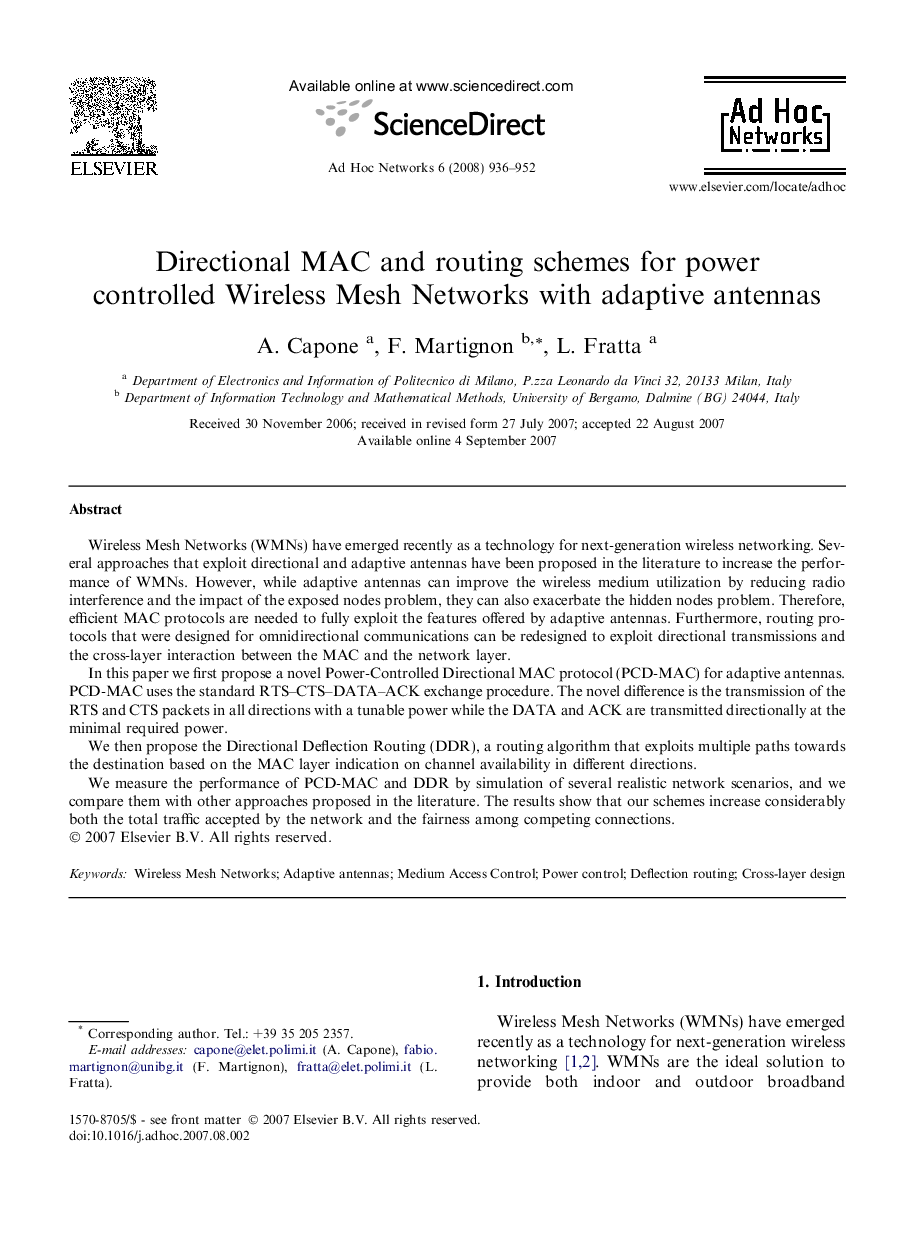| Article ID | Journal | Published Year | Pages | File Type |
|---|---|---|---|---|
| 445659 | Ad Hoc Networks | 2008 | 17 Pages |
Wireless Mesh Networks (WMNs) have emerged recently as a technology for next-generation wireless networking. Several approaches that exploit directional and adaptive antennas have been proposed in the literature to increase the performance of WMNs. However, while adaptive antennas can improve the wireless medium utilization by reducing radio interference and the impact of the exposed nodes problem, they can also exacerbate the hidden nodes problem. Therefore, efficient MAC protocols are needed to fully exploit the features offered by adaptive antennas. Furthermore, routing protocols that were designed for omnidirectional communications can be redesigned to exploit directional transmissions and the cross-layer interaction between the MAC and the network layer.In this paper we first propose a novel Power-Controlled Directional MAC protocol (PCD-MAC) for adaptive antennas. PCD-MAC uses the standard RTS–CTS–DATA–ACK exchange procedure. The novel difference is the transmission of the RTS and CTS packets in all directions with a tunable power while the DATA and ACK are transmitted directionally at the minimal required power.We then propose the Directional Deflection Routing (DDR), a routing algorithm that exploits multiple paths towards the destination based on the MAC layer indication on channel availability in different directions.We measure the performance of PCD-MAC and DDR by simulation of several realistic network scenarios, and we compare them with other approaches proposed in the literature. The results show that our schemes increase considerably both the total traffic accepted by the network and the fairness among competing connections.
